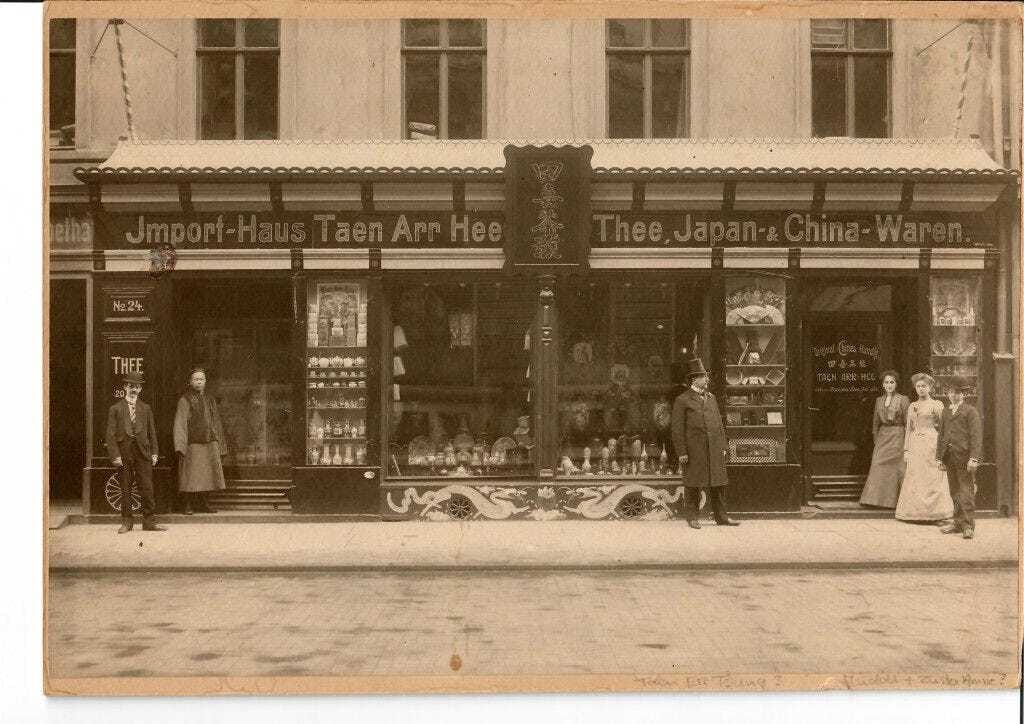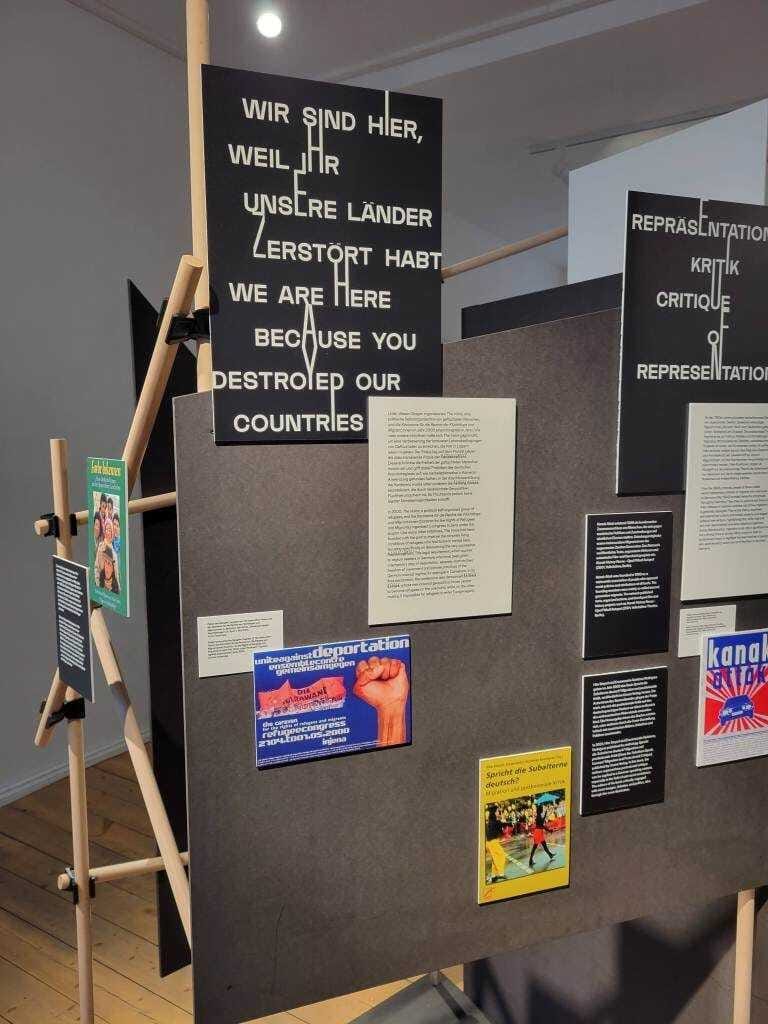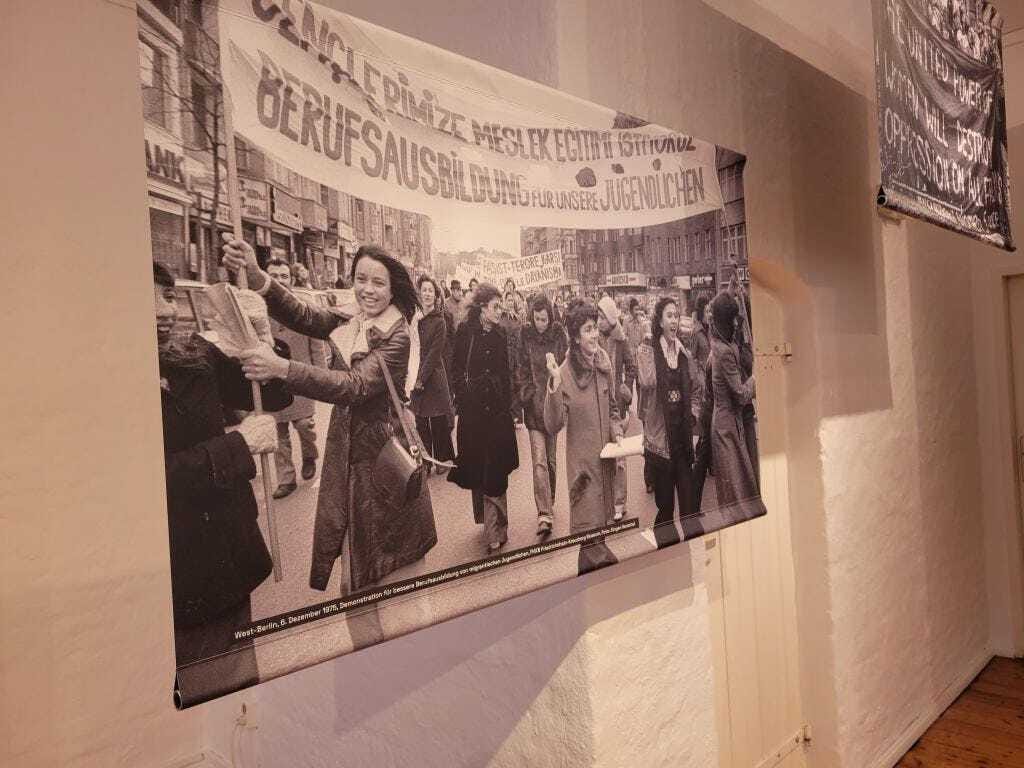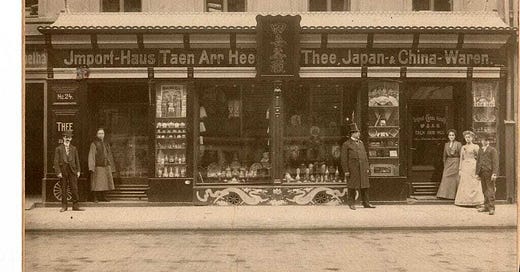Editor’s note: This post about a museum exhibition covering 100 years of immigration to the Kreuzberg neighborhood of Berlin originally appeared on my blog on February 24, 2023. The information has been edited and updated.

On Museum Sunday this month, we made our way to the Friedrichshain-Kreuzberg Museum to see the exhibit, "Trotz Allem: Migration in die Kolonial-Metropole Berlin," (Despite All: Migration to the Colonial Metropolis Berlin), which explores the city's long history as a hub for immigrant workers in Germany.
Beginning in the 19th century, immigrants from the German colonies in east Africa and China (the former "leased territory" of Kiaochow Bay) moved to Berlin, attracted by its rapid industrialization and the promise of jobs.
Thanks to the Hobrecht Plan: Kreuzberg in the 1860s quickly morphed from city dwellers' destination for weekend outings into a densely packed urban neighborhood. Rows of cramped apartment buildings, later derided as mietskaserne ('rental barracks'), covered each newly constructed street block.
Born in German colonial territories, many immigrants considered themselves residents of the German Empire. Some had a recognized right to move to Germany, some did not, but almost none were considered eligible for German citizenship.
This made them particularly vulnerable as Europe was engulfed in war. After the dissolution of the empire in 1918, many were subsequently rendered legally "stateless."

The exhibit describes the ways these disparate groups of people worked to survive and make Germany their home, even as they faced discrimination and exploitation as well as the horrors of the war.
After Germany's defeat in World War II, the German government heavily recruited guest workers from Italy and Turkey to help rebuild. These workers often wanted to re-settle here and bring or start their families here, and they joined the earlier groups of immigrants in calling Kreuzberg home.
Many of its apartment buildings had been heavily damaged during the war and were subsequently neglected and even abandoned by the property owners. Some buildings were taken over by 'squatters' who moved in and inhabited them despite a lack of city services, like water or electricity.
A related exhibit, "History is Made! Demolition and Departure at Kottbusser Tor" relates the struggle for immigrants, workers and others who moved in to Kreuzberg in the 1970s and 1980s to resist dislocation following the gentrification of the neighborhood after German reunification in 1990.

Today, Kreuzberg is heavily gentrified but still retains its multicultural and counter-cultural identity. Recent surveys have indicated that around half of the district's residents have a migration background.
Exhibit:
Despite All: Migration to the Colonial Metropolis Berlin
21 October 2022 - 30 April 2023
Visit the FHXB Museum
FHXB Friedrichshain-Kreuzberg MuseumAdalbertstraße 95A10999 Berlin-KreuzbergU-Bahn Kottbusser Tor (U1, U8), Bus M29, 140
Opening times:
Tuesday - Thursday 12:00–6:00 p.m.Friday – Sundat 10:00 a.m.–8:00 p.m.
Admission is free.




